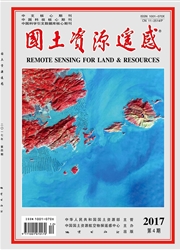

 中文摘要:
中文摘要:
分形维数法是分析空间结构分布的一种典型方法,但它对于区分不同的分布形式还存在缺陷。针对这一问题,该文介绍了空隙度指数的定义和树冠空隙度的计算方法;以模拟的树冠点云数据为对象,提出了一种基于三维凸包和三维滑动盒算法的激光雷达(LiDAR)点云数据空隙度分析方法,详尽分析了不同冠型产生的空隙度指数差异;并利用4棵实测的树冠点云数据做检验;最后阐述了空隙度指数在树冠空间异质性分析研究中的作用,并对其应用范围和前景作了展望。结果表明:划分尺度相同时,在一定的尺度范围内,锥型树冠、半球型和半椭球型树冠的差别可以通过空隙度指数曲线有效地区分,实测树冠的结果也体现了空隙度指数对于判断树冠空间结构的有效性。
 英文摘要:
英文摘要:
The spatial distribution of the crown structure has important significance in forestry. Although fractal dimensions is a typical method for analyzing the spatial distribution, it has some defects. In this paper, a method for calculating lacunarity with simulated and real point clouds data for tree crowns is proposed. This method was developed using 3D convex hulls and 3D gliding-box algorithm. Lacunarity differences from different crowns were analyzed in detail. The application of the extension was also demonstrated using ground-based light detection and ranging ( LiDAR) points for four tree crowns in the field. The results show that the differences between tree crowns can be revealed by lacunarity, and that lacunarity can be a potential measure for the classification of three -dimensional crown shapes using LiDAR point clouds.
 同期刊论文项目
同期刊论文项目
 同项目期刊论文
同项目期刊论文
 期刊信息
期刊信息
